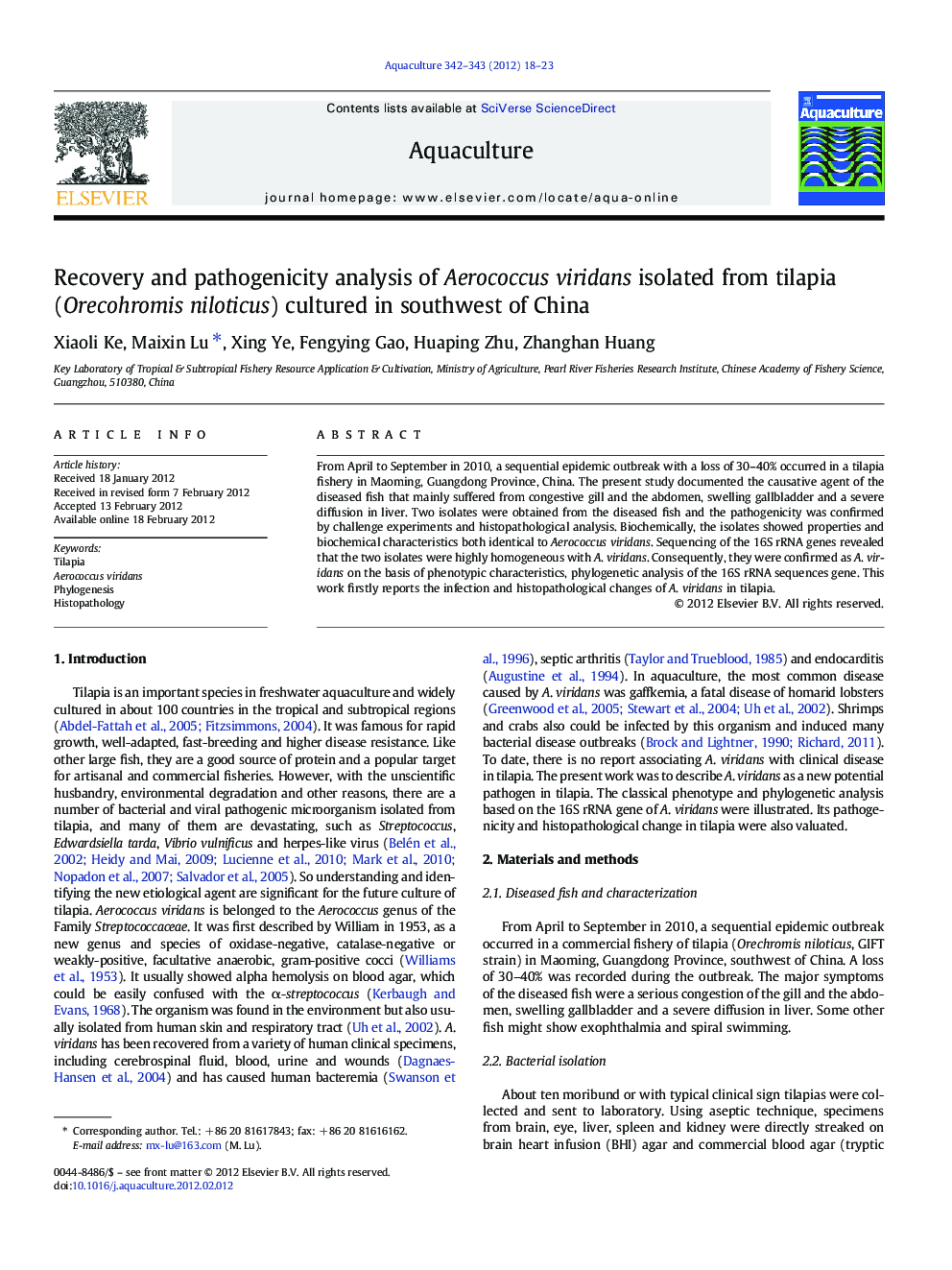| Article ID | Journal | Published Year | Pages | File Type |
|---|---|---|---|---|
| 2422599 | Aquaculture | 2012 | 6 Pages |
From April to September in 2010, a sequential epidemic outbreak with a loss of 30–40% occurred in a tilapia fishery in Maoming, Guangdong Province, China. The present study documented the causative agent of the diseased fish that mainly suffered from congestive gill and the abdomen, swelling gallbladder and a severe diffusion in liver. Two isolates were obtained from the diseased fish and the pathogenicity was confirmed by challenge experiments and histopathological analysis. Biochemically, the isolates showed properties and biochemical characteristics both identical to Aerococcus viridans. Sequencing of the 16S rRNA genes revealed that the two isolates were highly homogeneous with A. viridans. Consequently, they were confirmed as A. viridans on the basis of phenotypic characteristics, phylogenetic analysis of the 16S rRNA sequences gene. This work firstly reports the infection and histopathological changes of A. viridans in tilapia.
► Identification of a new pathogen from tilapia. ► A. viridans lead to disease outbreak in tilapia farm. ► A. viridans cause histopathological changes in tilapia.
